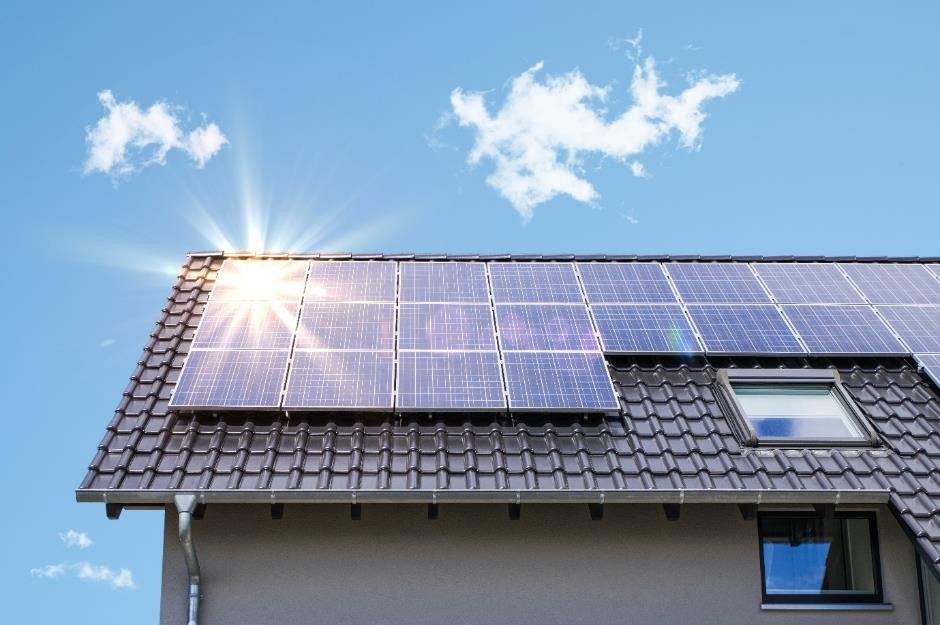You may have heard of the terms grid-tied (on-grid) and off-grid solar systems when it comes to solar panels. When choosing a solar system for homes, these are two valuable concepts to understand.
You will have to choose which one to mount on your rooftop, depending on your location, power requirements, and grid availability. The easy response to this is that when a solar system for home is connected to the main utility power lines, it is called on-grid solar system (grid-tied). Whereas off-grid systems are optional to connect to these lines. Batteries are needed by an off-grid system for home.

Image Courtesy: Shutterstock
You could go for an on-grid system if you want a cheaper and simpler solar system for home. However, off-grid solar systems can provide the energy your appliances need in areas where grid power is unreliable or not available all the time.
If you are still baffled, here is a comprehensive explanation of both:
-
On-Grid Solar System
You can integrate a grid-tied solar system for home in the main power grid to get electricity. A connection to the grid is required. This solar system needs a grid reference voltage and frequency to allow it to synchronize and work. This system uses grid-linked solar inverters that first samples the main grid’s voltage and frequency set-points before working and then convert DC (direct current) to AC (alternating current).
Appliances You Can Link to An On-Grid System
Home appliances need 110V or 220V AC at a frequency of 50Hz or 60Hz. Now, you typically get this power from the main grid provided by your utility. You can use it to run your home appliances if you intend to install a grid-tied solar power system.
Authority Approvals and Documentation for On-Grid Systems
On-grid systems are also integrated with the electrical load’s network from nearby houses, transformers, transmission lines, distribution lines, substations, and grid elements of other utilities. You can’t just install your solar panel and plug it into the grid directly. You have to conform to the rules and regulations of the utility provider.
The documentation’s main aim is for the utility to ensure its power system’s protection and integrity when it is connected to your solar system.
Anti-Islanding Protection of On-Grid Solar Systems
During a grid power outage, the on-grid system will shut down. The inverters prevent receiving the output of solar energy from your panels and does not export to grid when the grid is down.
It is referred to as ‘anti-islanding’ protection and is done with a device embedded within most inverters linked to the grid. Its main role is to isolate the solar system for home in the event of a power loss. When a fault occurs, inverters shut off to avoid feeding solar power to the grid. It prevents the utility companies’ electricians and linemen away from being electrocuted by the solar power system.
Zero-Export Requirement
Some utility service providers still do not allow power from solar systems to be exported to the grid. With this, solar homeowners would have to incorporate their device with a zero-export mechanism. This is achieved by installing a device that limits solar energy export or uses an inverter with this capability. They only need to allow it if the inverter has a zero-export capability.
Homeowners can only use solar energy in this case when they use their appliances during the day. It would not export surplus solar energy to the grid. When there is a low load requirement, the inverter attached will curtail solar power.
-
Off-Grid Solar System
A stand-alone solar power system for home is also considered an off-grid system. All the electrical appliances will be powered by solar power alone. It operates separately from the utility power grid, hence the name. You will still be able to utilize solar power by storing it in the battery power bank. But there will be no option for exporting excess power to the grid.
In remote areas where power lines are still not available, this device helps you live comfortably. It allows you to be fully autonomous from the main power grid.
Here’s How You Can Use an Off-Grid Solar System
In places where grid power is unavailable, very small, or unreliable, this device can usually be found. There are several places where it is suitable for use. Here are some common places where an off-grid solar system for home is used:
- Isolated rural territories
- Farms in remote regions
- Mining zones
- Communications towers
- Street lighting
You can connect appliances that need 110V or 220V AC at a frequency of 50Hz or 60Hz with this solar system in your home. You can thank the inverters and batteries that transform DC power into AC. You can also enjoy using most of your appliances, depending on the size of your solar power system and back-up battery bank, as long as the stored energy lasts.
Aside from AC loads, you can also power your DC electrical appliances utilizing the 12V, 24V, or 48V DC supply provided by a solar charge controller. Most individuals with an off-grid system often buy TVs, light bulbs, and other appliances only need DC power. This way, they would be more effective because they would not need to convert the DC into AC to run the appliances.
Choose the Best Solar System for Home
Now that you have understood the working and application of off-grid and on-grid solar systems, it is crucial to buy one for your home. When buying one, always explore products from trusted brands like Luminous that offer a wide range of off-grid and on-grid solar packages. Along with PID Resistance Technology, Severe Weather Resilience, Excellent Low-Light Performance, and Advance EVA Encapsulation in solar panels, they offer products at the best price in the market. So, do not wait, and equip your home with the best solar panel system.
